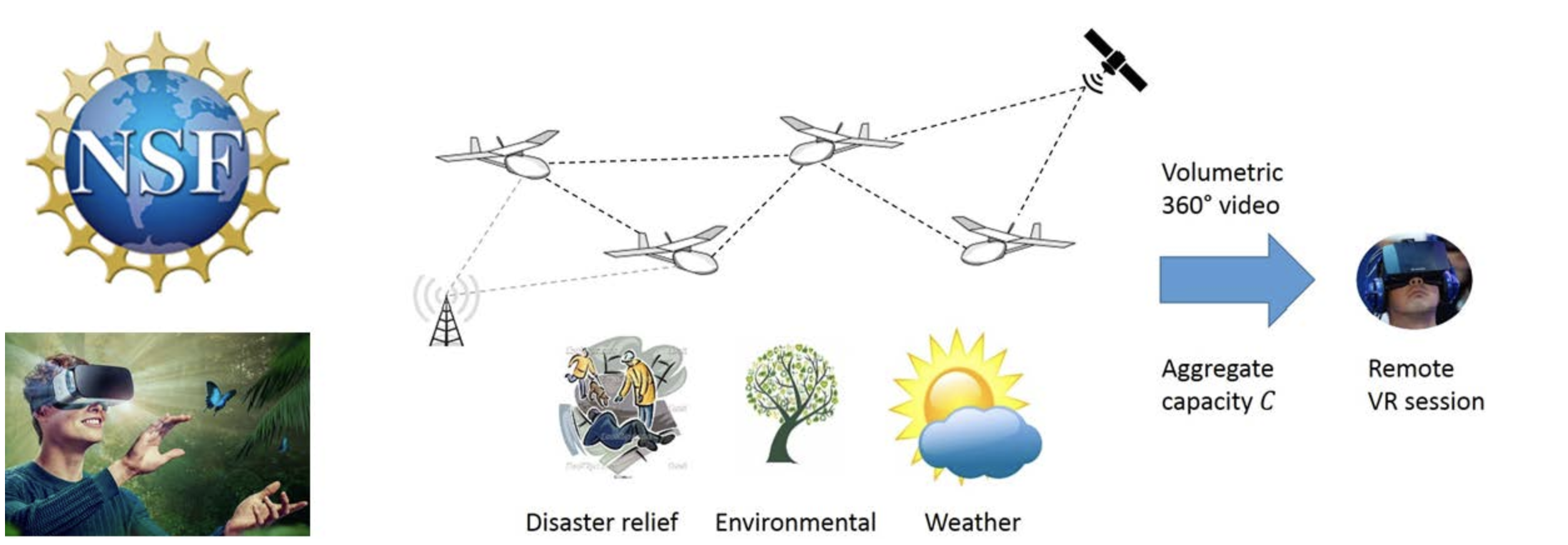
This blog post is from Jacob Chakareski, Assistant Professor of Electrical and Computer Engineering at the University of Alabama.
Virtual and augmented reality (VR/AR) hold tremendous potential to advance our society. Together with another pair of emerging technologies, 360° video and holographic video, they can suspend our disbelief of being at a remote location or having remote objects/people present in our immediate surrounding, akin to virtual human/object teleportation. Presently limited to offline operation and synthetic content and targeting gaming and entertainment, VR/AR are expected to reach their potential when deployed online and with real remote scene content, enabling novel applications in disaster relief, the environmental sciences, transportation, and quality of life. Networked VR/AR applications will play a major role in the envisioned/emerging global Internet of Things framework and are expected to represent the foundation of the anticipated 5G tactile Internet ecosystem. However, there are considerable challenges ahead, in the form of technology limitations and infrastructure costs.
The National Science Foundation (NSF) recently sponsored The Future VR/AR Network — Towards Virtual Human/Object Teleportation, the first Visioning Workshop on Networked Virtual and Augmented Reality Communications, held in Washington, DC on April 23-24. Gold sponsors for the event were Adobe Research and the College of Engineering at the University of Alabama. The workshop was organized by Jacob Chakareski from the University of Alabama. The objectives of the workshop were to gather a forum of experts and interdisciplinary practitioners to help identify the most promising horizons to explore to address the above challenges and contemplate a community agenda that will integrate emerging threads of related work into collaboration.
The workshop comprised a broad set of participants, as several disciplines and closer collaboration of researchers of diverse backgrounds needed to be involved to realize its objectives. The workshop program comprised a mix of breakout sessions, panel discussions, and short talks by leading early investigators, scheduled over two days. The program included on the first day a panel discussion featuring industry leaders in the field and interdisciplinary practitioners, and an expert panel on the second day to identify the grand challenges in networked VR/AR over the next five years.
There was strong agreement among the workshop participants that overcoming the present challenges and technology limitations is essential for enabling the next generation societal VR/AR applications. Similarly, there was uniform agreement that this will necessitate departing from traditional networking approaches that solely aim to increase data rates or lower transmission delays, as the performance gap between networked VR/AR requirements and present/upcoming conventional networking technologies is only expected to increase. Instead, holistic solutions should be investigated that go beyond the traditional networking domain to closely integrate capture, coding, networking, and user navigation of VR/AR data, while prospectively leveraging emerging/non-legacy networking technologies such as millimeter wave, free-space optics, and edge computing.
Finally, there was strong consensus at the workshop that it is essential to invest now in research that aims to meet this objective. Moreover, steady investment should be made in developing publicly available benchmark datasets, source code, evaluation settings, and testbeds, to help accelerate such research and drive reproducibility and standardization, at the same time.
More information about the workshop can be found on its website. A detailed report outlining the identified challenges of present networked VR/AR technologies and research horizons to explore towards enabling the envisioned next generation societal VR/AR applications has been compiled and included on the website.









